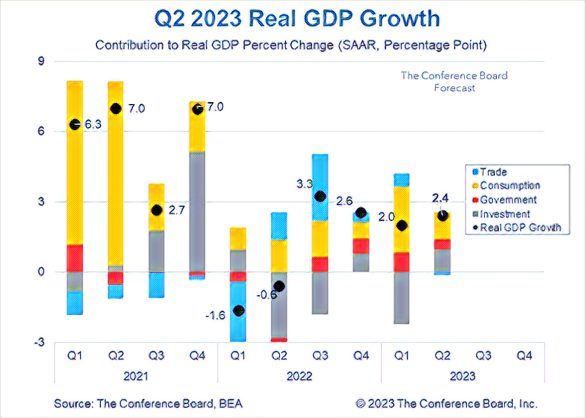Zimbabwe’s economy recorded a 1.5 percent growth in the second quarter of 2023, after a sharp contraction of 11.1 percent in the first quarter, according to the latest data from the Zimbabwe National Statistics Agency (ZimStat). The recovery was mainly driven by improved performance in accommodation and food services, electricity supply, transport and storage, water, agriculture, and construction sectors.
The growth rate for the second quarter was higher than the 4.5 percent year-on-year increase, which measures the change in value-added for a particular quarter compared to the same quarter in the previous year. ZimStat said the growth rate for the second quarter was estimated using the rebased GDP series with 2019 as the base year.
The accommodation and food services sector registered the highest growth rate of 58.6 percent, as bed occupancy surged due to increased domestic and international tourism. The easing of COVID-19 lockdown restrictions and the successful vaccination program boosted the confidence of travelers and hotel operators.
The electricity supply sector also improved by 18.3 percent, benefiting from the technical commissioning of Hwange 7 and 8 thermal power stations, which added 600 megawatts to the national grid. The new units helped reduce load-shedding and power outages that had plagued the country for years.
Other sectors that contributed to the economic recovery included transport and storage (12.7 percent), water (11.3 percent), agriculture (8.1 percent), construction (7.7 percent), and mining and quarrying (4.7 percent). The agriculture sector was supported by increased output in tobacco, cotton, and horticulture production, while the mining sector was boosted by higher production of gold, nickel, coal, phosphates, and granite.
However, some sectors registered negative growth during the period, such as wholesale and retail trade (-6.3 percent), manufacturing (-4.2 percent), and education (-2.1 percent). These sectors were affected by value chain disruptions, low demand for goods and services, and reduced enrolment of students.
The economic outlook for Zimbabwe remains positive, as the government expects a 5.3 percent growth for the whole year of 2023. The growth projection is supported by macroeconomic stability, fiscal discipline, monetary reforms, and improved business confidence. The government has also implemented bold interventions to address the challenges faced in the first quarter, such as currency depreciation, inflation surge, erratic rainfall, electricity shortages, and external shocks.
Zimbabwe is also set to benefit from increased regional and international trade, as it has ratified the African Continental Free Trade Area (AfCFTA) agreement and secured debt relief from some of its creditors. The country is also receiving support from multilateral institutions such as the International Monetary Fund (IMF), the World Bank, and the African Development Bank (AfDB) to implement its economic recovery and transformation plan.
However, some risks and uncertainties remain for Zimbabwe’s economy, such as political instability ahead of the 2023 elections, social unrest due to poverty and inequality, climate change impacts on agriculture and energy sectors, and potential resurgence of COVID-19 variants. The government must maintain its reform momentum and address these challenges to sustain economic growth and development.
Source: The Herald


